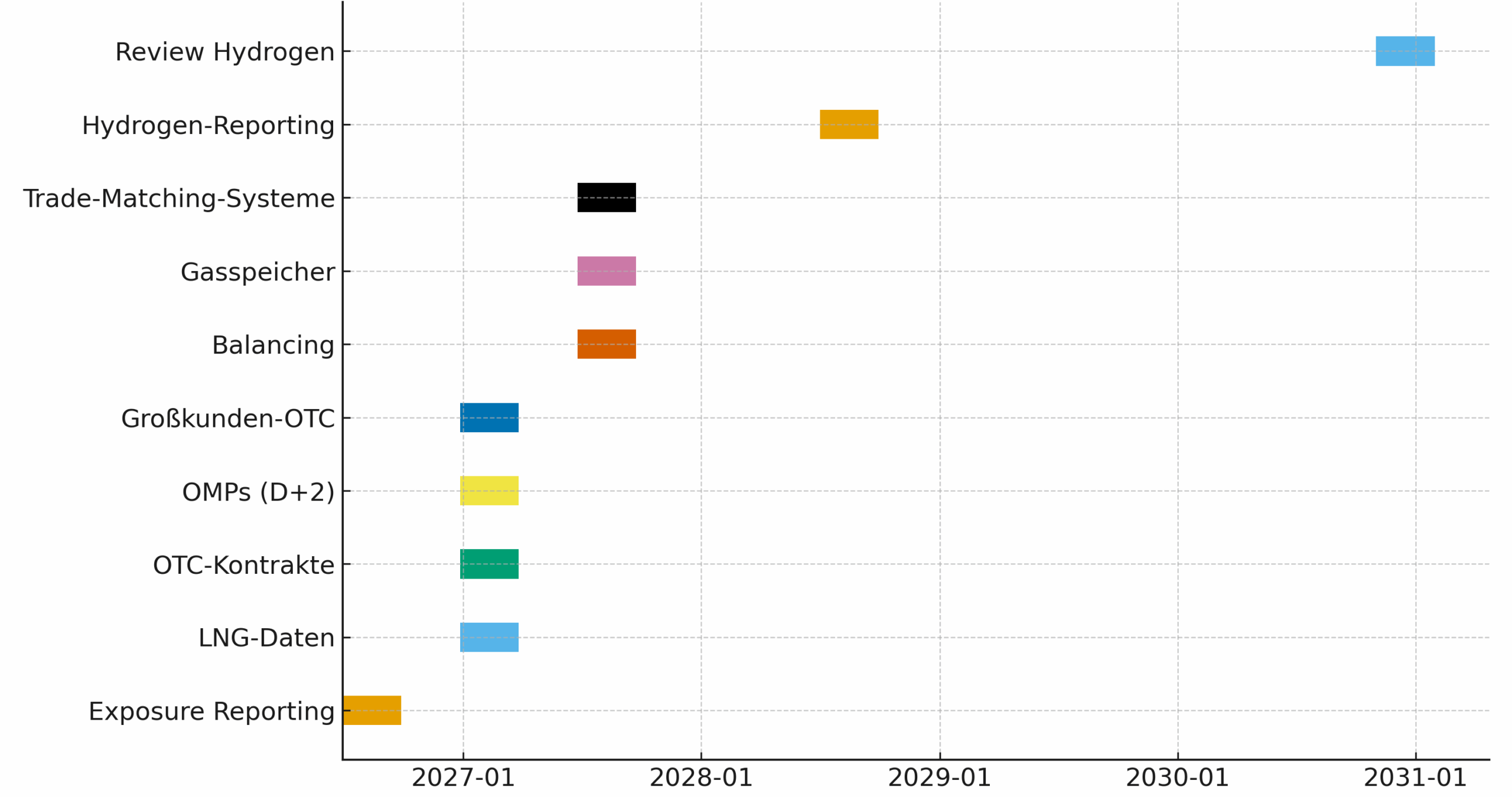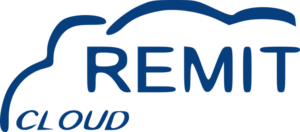15.09.2025 – Key changes from the draft of the new REMIT 2 Implementing Regulation
New Reporting Obligations
- Exposure Reporting (Art. 6)
- Quarterly reporting of:
- Trading positions in electricity & gas
- Forecasted generation
- Forecasted sales to end customers
- Reporting horizon: 24 months into the future.
- Threshold: market participants with < 600 GWh/year (separately for electricity and gas) are exempt.
- Start: Q1 2027 (first reports due by end of April 2027).
- Quarterly reporting of:
- Hydrogen Reporting
- From 1 July 2028 annual reporting of supply, transport and storage transactions.
- Simplified datasets (few fields).
- Exemptions: small producers (≤ 50 MW), local networks, end consumers < 600 GWh/year.
- Balancing Transactions
- New mandatory requirement, to be reported monthly and in aggregated form.
- Reason: more complete market monitoring.
- Gas Storage
- Introduction of “periodic reporting” for contracts ≥ 12 months (monthly reporting).
- Electricity storage
- To be treated as electricity supply, no separate category.
Deadlines and Reporting Intervals
- OTC Contracts
- Deadline shortened from 1 month → 10 working days after contract conclusion.
- Trades on OMPs
- Deadline extended from D+1 → D+2 (relief due to higher liquidity & IT workload).
- LNG Data
- Must be reported “as close as possible to real time”.
Simplifications & Relief
- New category “periodic reporting” → less frequent reporting (e.g. gas storage, hydrogen, balancing).
- Ad hoc reporting expanded
- Upstream pipelines, gas storage <12 months, redispatching contracts, voice-broker orders.
- Large consumer contracts (≥ 600 GWh):
- OTC reporting moved from continuous → semi-annual.
New Data Fields / Clarifications
- LNG-specific fields (e.g. vessel, terminal, price formulas).
- Algorithm ID for algo-trading.
- Identification for Direct Electronic Access (DEA).
- Additional fields for PPAs (e.g. asset type, contract mechanism).
- New Table 5 for trade-matching systems (SIDC etc.).
Inside Information & Reporting Channels
- Inside information only via IIPs (Inside Information Platforms).
- Transaction, exposure and fundamental data exclusively via RRMs.
- ACER may in future request original contracts (not only reported data).
Fundamental Data Reporting
- TSOs must additionally report imbalance settlement data monthly.
- LNG system operators: reporting now aggregated (due to virtual tank systems), no longer obliged to report planned/unplanned outages (already covered via inside information).
Legal Clarifications
- Definitions updated (e.g. “Organised Marketplace” removed, as already regulated in REMIT 2024).
- Responsibilities along the reporting chain clarified (Participant → OMP → RRM/IIP → ACER).
Key Dates & Transitional Periods
- 12-month transitional period: old Annex & Art. 3 from 1348/2014 apply in parallel after entry into force.
- Staggered deadlines (Art. 17):
- 6 months after entry into force: Exposure Reporting (Art. 6).
- 12 months after entry into force: LNG data (Art. 7(2)), OTC reporting (10 working days).
- 12 months after entry into force: Continuous Reporting (Art. 3), Large consumer OTC (Art. 4(2)).
- 18 months after entry into force: Balancing, Gas storage, Redispatching, Trade-matching systems (Art. 4(3)–(7), Art. 9, Art. 11(4)).
- 1 July 2028: Hydrogen Reporting (Art. 4(8)).
- 1 November 2030: ACER review → assessment whether hydrogen reporting rules need to be adapted.

Further information: Wholesale energy markets – data reporting rules (revision)
